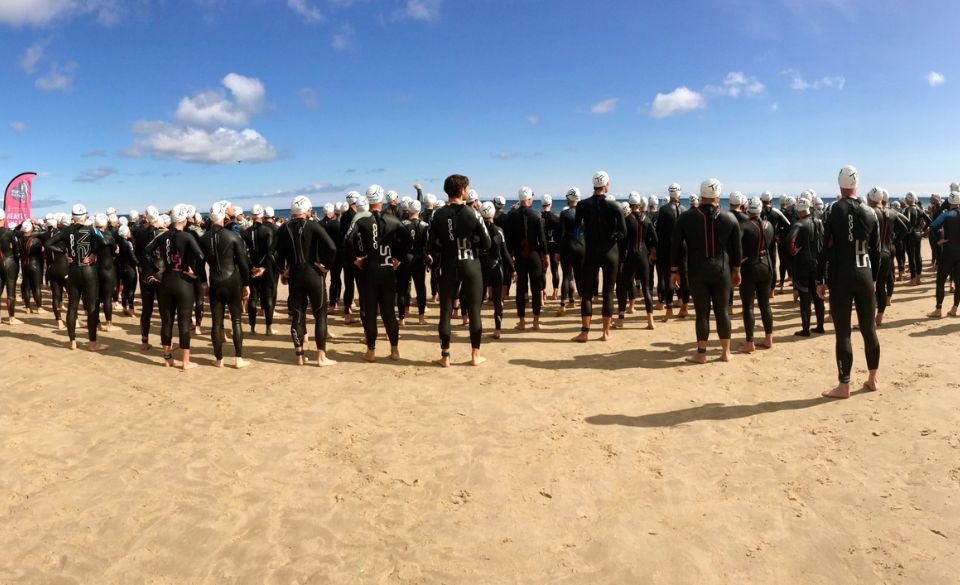
How Many Ironman Triathlons Should You Do Per Year?
Page Contents
If you’ve caught the Ironman bug, that insatiable desire to push your limits and conquer one of the most challenging endurance events out there, you might be wondering: how many Ironman triathlons should you tackle in a single year? It’s a question that every dedicated triathlete contemplates, balancing the allure of multiple achievements with the realities of physical strain and recovery. Let’s dive into this intriguing topic and find the right balance for your journey.
Understanding the Ironman Challenge
Before we delve into the question of frequency, let’s grasp the enormity of the Ironman challenge. An Ironman triathlon consists of a 2.4-mile (3.86 km) swim, followed by a 112-mile (180.25 km) bike ride, capped off with a full marathon—a 26.2-mile (42.195 km) run. Completing one Ironman is a remarkable achievement in itself, requiring months of dedicated training, mental fortitude, and a disciplined approach to nutrition and recovery.
Factors to Consider:
Physical Demand and Recovery:
The primary factor to weigh is the toll an Ironman takes on your body. It’s a grueling test of endurance that requires substantial recovery time afterward. Training for, completing, and recovering from an Ironman can leave you physically exhausted for several weeks. Pushing yourself to complete multiple Ironmans in a short span could lead to overtraining, burnout, or even injury.
Training Time and Quality:
Properly preparing for an Ironman demands extensive training time. Juggling multiple Ironman events within a year might compromise the quality of your training sessions. Quantity shouldn’t overshadow the importance of quality training, which includes structured workouts, technique improvement, and rest.
Performance Goals:
Consider your goals for each Ironman. Are you aiming to complete, compete, or set personal records? Different goals require varying levels of preparation and recovery. Focusing on one or two Ironmans with clear goals can lead to better results than spreading yourself thin across multiple races.
Mental Stamina:
Ironman events aren’t just a physical test; they’re a mental battle as well. The mental fortitude required to push through a grueling race is a finite resource. Participating in numerous Ironmans could impact your ability to maintain the necessary mental resilience.
Expert Opinions and Studies
Research and expert opinions shed light on the matter. A study published in the “Journal of Sports Science & Medicine” suggested that elite triathletes perform better in Ironman events when they limit themselves to one or two per year. The study found that increasing the number of Ironmans was associated with decreased performance. This emphasizes the importance of allowing sufficient time for recovery and focused training.
Additionally, many seasoned triathlon coaches recommend a balanced approach. Graeme from SportCoaching, a professional coach, advises his athletes to aim for one Ironman race every six to eight months. This timeline allows athletes to recover, build up their fitness base, and work on specific aspects of their performance between races.
Strategies for Success
When it comes to determining how many Ironman triathlons you should take on in a year, here are some strategies to help guide your decision:
Set Clear Goals:
Before you decide to participate in multiple Ironmans, define your goals for each race. Are you aiming for personal bests, completion, or a mix of experiences? Having well-defined goals will help you tailor your training and race strategy accordingly.
Plan Your Race Calendar:
Plan your race calendar strategically. Avoid clustering races too closely together, as this could hinder proper recovery. Give yourself ample time to recuperate between events, allowing your body to heal and rebuild.
Periodization and Focus:
Implement a periodized training plan that focuses on specific aspects of your performance throughout the year. For instance, you might emphasize building endurance in one phase and working on speed and technique in another. This approach allows you to address different aspects of your fitness without constantly racing.
Recovery Protocols:
Prioritize recovery as much as training. Incorporate regular rest days, sleep, and proper nutrition into your routine. Consider post-race recovery strategies like massages, foam rolling, and gentle workouts to aid in muscle repair.
Listen to Your Body:
Pay attention to your body’s signals. If you’re feeling consistently fatigued, experiencing persistent aches, or noticing a decline in performance, it might be a sign that you need more recovery time. Don’t hesitate to adjust your plans accordingly.
A Holistic Approach to Triathlon
Ultimately, participating in Ironman triathlons is a multifaceted journey that extends beyond race day. It involves consistent training, mental preparation, and a holistic approach to health and well-being. Rather than chasing the quantity of races completed, focus on the quality of your experiences and the growth you achieve as an athlete.
The allure of multiple Ironmans per year might be tempting, but the wisdom lies in finding the balance that aligns with your body’s capabilities and your personal aspirations. As you ponder how many Ironman triathlons to tackle in a year, remember that success isn’t solely defined by finisher medals; it’s about the journey you embark on, the lessons you learn, and the satisfaction of surpassing your own limits.
Final Words – How Many Ironman Triathlons Should You Do Per Year?
The question of how many Ironman triathlons you should do per year doesn’t have a one-size-fits-all answer. It’s a decision that requires introspection, goal-setting, and a realistic assessment of your physical and mental capacity. While some might thrive on the challenge of multiple races, others might find that focusing on one or two events yields better results and overall satisfaction.
In the pursuit of greatness, remember that quality trumps quantity. By strategically planning your races, prioritizing recovery, and maintaining a holistic perspective on your journey, you can make the most of your Ironman experiences. The Ironman triathlon is a remarkable test of endurance, and the journey toward becoming an Ironman is just as significant as the finish line itself.



